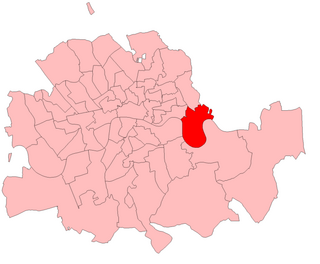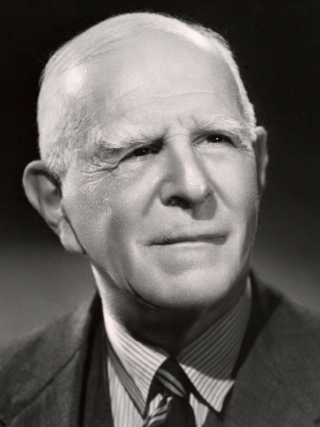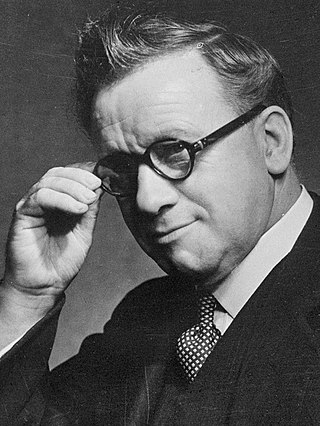
Major Harry Barnes was a radical United Kingdom Liberal Party politician, architect and author specialising in housing and town planning.

Alfred Henry Scott was a British Liberal politician.
The Municipal Reform Party was a local party allied to the parliamentary Conservative Party in the County of London. The party contested elections to both the London County Council and metropolitan borough councils of the county from 1906 to 1945.
Frank Briant was a radical British Liberal Party politician who served as a Member of Parliament for Lambeth North. In addition, he represented Lambeth on the London County Council and was a leading member of Lambeth Borough Council.
An election to the County Council of London took place on 5 March 1910. It was the eighth triennial election of the whole Council. The size of the council was 118 councillors and 19 aldermen. The councillors were elected for electoral divisions corresponding to the parliamentary constituencies that had been created by the Representation of the People Act 1884. There were 57 dual member constituencies and one four member constituency. The council was elected by First Past the Post with each elector having two votes in the dual member seats.

An election to the County Council of London took place on 5 March 1913. It was the ninth triennial election of the whole Council. The size of the council was 118 councillors and 19 aldermen. The councillors were elected for electoral divisions corresponding to the parliamentary constituencies that had been created by the Representation of the People Act 1884. There were 57 dual member constituencies and one four member constituency. The council was elected by First Past the Post with each elector having two votes in the dual member seats. Unlike for parliamentary elections, women qualified as electors for these elections on exactly the same basis as men. Women were also permitted to stand as candidates for election.
An election to the County Council of London took place on 6 March 1919. It was the tenth triennial election of the whole Council. The size of the council was increased to 124 councillors and 20 aldermen. The councillors were elected for electoral divisions corresponding to the new parliamentary constituencies that had been created by the Representation of the People Act 1918. There were 60 dual-member constituencies and one four-member constituency. The council was elected by First Past the Post, with each elector having two votes in the dual-member seats.

An election to the County Council of London took place on 2 March 1922. It was the eleventh triennial election of the whole council. There were sixty dual member constituencies and one four member constituency, making a total of 124 seats. The council was elected by First Past the Post with each elector having two votes in the dual member seats.
Sir Harry Ralph Selley was a British master builder and Conservative Party politician. He served as the Member of Parliament (MP) for Battersea South in London from 1931 to 1945.

The 1914 Poplar by-election was a Parliamentary by-election held on 19 February 1914. The constituency returned one Member of Parliament (MP) to the House of Commons of the United Kingdom, elected by the first past the post voting system.
An election to the County Council of London took place on 16 April 1958. The council was elected by First Past the Post with each elector having three votes in the three-member seats. The Labour Party, who had already run the council for 24 years, won their largest ever majority.
An election to the County Council of London took place on 31 March 1955. The council was elected by First Past the Post with each elector having three votes in the three-member seats. The Conservative Party made significant gains, but the Labour Party retained a substantial majority.
An election to the County Council of London took place on 3 April 1952. The council was elected by First Past the Post with each elector having three votes in the three-member seats. The Labour Party made substantial gains and greatly increased its majority.

An election to the County Council of London took place on 7 March 1946. The council was elected by First Past the Post with each elector having two votes in the two-member seats. The Labour Party once more made gains, again increasing their majority over the Conservative Party.

An election to the County Council of London took place on 4 March 1937. The council was elected by First Past the Post with each elector having two votes in the two-member seats. The Labour Party made gains, increasing their majority over the Municipal Reform Party.

An election to the County Council of London took place on 8 March 1934. The council was elected by First Past the Post with each elector having two votes in the two-member seats. The Labour Party made large gains from the Municipal Reform Party, and for the first time won control of the council..

An election to the County Council of London took place on 5 March 1931. The council was elected by First Past the Post with each elector having two votes in the two-member seats. The Municipal Reform Party slightly increased its majority on the council, with overall results matching those from 1925.
Kennington was a constituency used for elections to the London County Council between 1889 and 1949. The seat shared boundaries with the UK Parliament constituency of the same name.
Poplar South was a constituency used for elections to the London County Council between 1919 and 1949. The seat shared boundaries with the UK Parliament constituency of the same name.

An election to the County Council of London took place on 8 March 1928. The council was elected by First Past the Post with each elector having two votes in the two-member seats. The Labour Party made slight gains at the expense of the Municipal Reform Party, which nonetheless retained a substantial majority.











